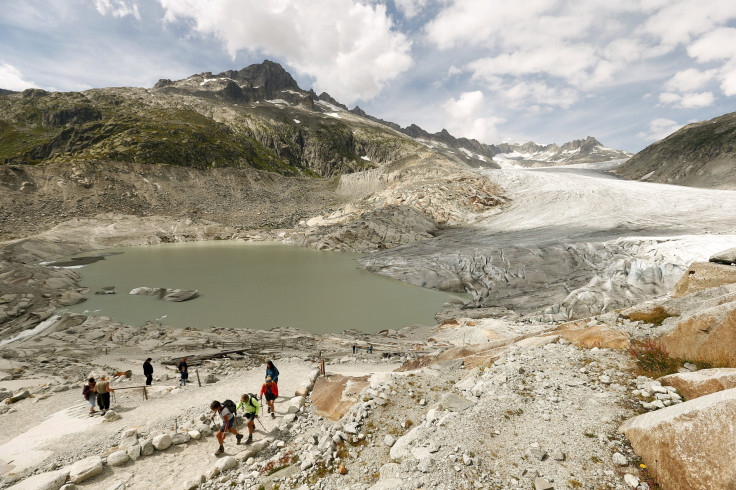Climate Change Triggering 'Historically Unprecedented' Glacial Ice Melt

The first decade of the twenty-first century has not been a good one for the planet's climate. Of the 15 warmest years on record, 14 have occurred since 2000. Rising global temperatures have also made glaciers -- ice masses that currently occupy nearly 10 percent of the world’s total land area -- increasingly unstable.
Although the melting of glaciers is a well-documented effect of climate change, a new study has now shown how alarming this rate of ice-loss is. According to the study, published in the International Glaciological Society’s Journal of Glaciology, the first decade of the twenty-first century witnessed a “historically unprecedented” rate of glacial ice melt.
“The observed glaciers currently lose between half a metre and one metre [1.6 feet and 3.2 feet] of its ice thickness every year -- this is two to three times more than the corresponding average of the 20th century,” Michael Zemp, director of the University of Zurich’s World Glacier Monitoring Service and lead author of the study, said, in a statement. The research also shows that ice-melt would continue even if climate change somehow stopped and temperatures stabilized.
For the purpose of the study, the monitoring service compiled data on changes in glaciers over the last 120 years. A total of over 5,000 measurements of glacier volume and mass changes since 1850 and more than 42,000 records from observations and reconstructions dating back to the sixteenth century were analyzed.
Analysis of the data showed that despite isolated cases where ice volume and thickness increased, none of the advancing glaciers have come close to the maximums achieved during the so-called “Little Ice Age” -- a period of cooling between the sixteenth and the nineteenth century. The long-term trend remains one of retreat.
“Exact measurements of this ice loss are reported from a few hundred glaciers only. However, these results are qualitatively confirmed from field and satellite-based observations for tens of thousands of glaciers around the world,” Zemp said, in the statement.
Previous studies have shown that glaciers in the European Alps and Greenland are especially vulnerable to the effects of climate change. While the Alps could lose anything between 75 percent and 90 percent of their glacial ice by the end of the century, Greenland’s glaciers -- which have the potential to raise global sea levels by up to 20 feet -- are expected to melt faster as their exposure to warm ocean water increases.
The meltwater from these glaciers, in addition to the water released by glaciers in West Antarctica -- a region currently shedding the weight of Mount Everest every two years -- would further raise sea levels that have already risen nearly seven inches over the past 100 years.
© Copyright IBTimes 2025. All rights reserved.






















